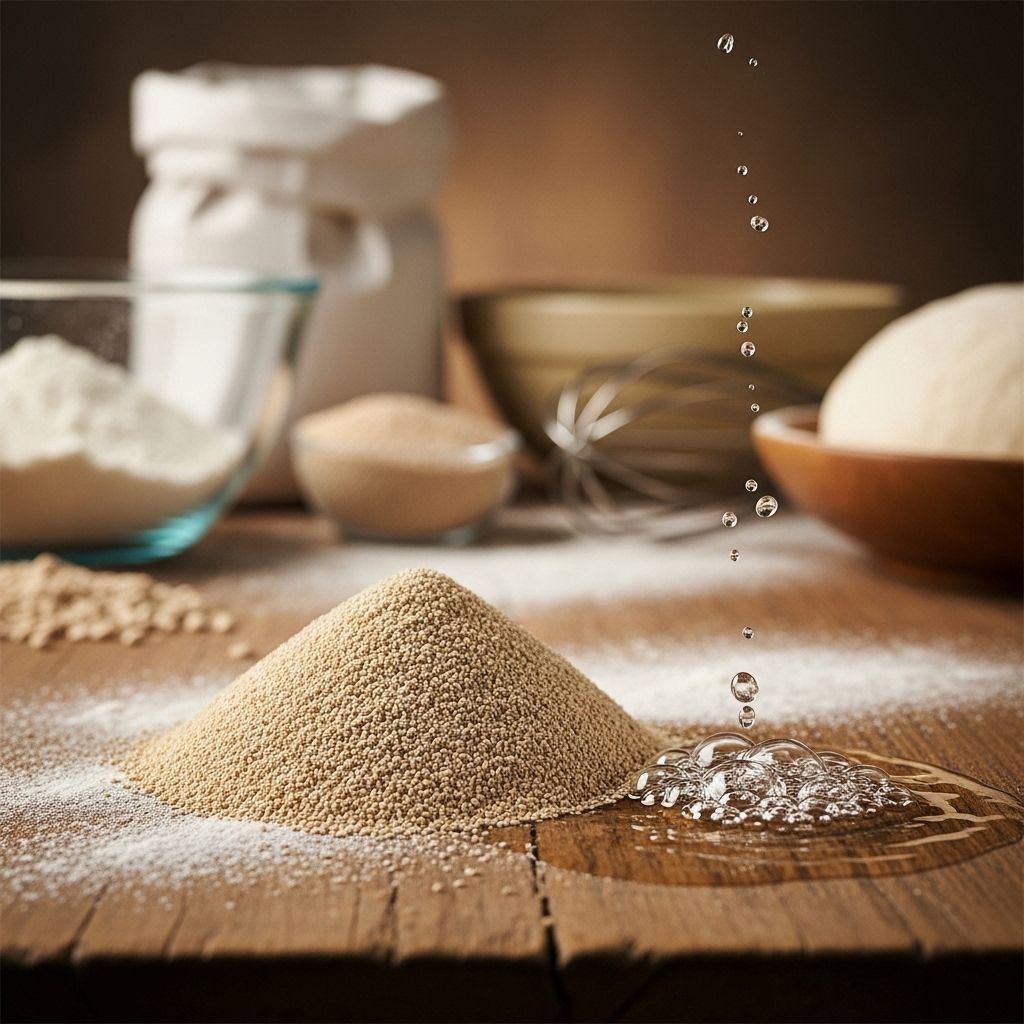Understanding Baker’s Yeast: Benefits, Uses, and Taste
Exploring the World of Baker's Yeast for Better Baking

Introduction to Baker’s Yeast
Baker’s yeast, scientifically known as Saccharomyces cerevisiae, is a single-celled living microorganism from the fungus kingdom. It has been a crucial ingredient in baking for thousands of years, enabling the transformation of simple flour and water into the fluffy, aromatic bread we enjoy today.
What is Baker’s Yeast?
Baker’s yeast is a biological leavening agent used in baking to create the rise in dough. It converts sugars into carbon dioxide and ethanol through a process called fermentation. This process is crucial for giving bread its characteristic texture and flavor. The scientific name *Saccharomyces cerevisiae* means “sugar fungus” because it consumes sugars and produces carbon dioxide and alcohol as byproducts.
Types of Baker’s Yeast
Baker’s yeast comes in several forms, each with its own specific characteristics and uses:
- Compressed Yeast (Fresh Yeast): This type is highly perishable and requires refrigeration. It is preferred by professional bakers for its rapid fermentation and excellent flavor development.
- Active Dry Yeast: Introduced in the 1940s, it offers a long shelf life and consistent performance. It needs to be activated in warm water before use.
- Instant Yeast: Similar to active dry yeast but dissolves more quickly in recipes, reducing rising times and making it ideal for those in a hurry.
Benefits of Baker’s Yeast
Baker’s yeast offers several benefits in baking:
- Leavening Agent: It helps dough rise, creating air pockets that give bread its light and airy texture.
- Flavor Development: The byproducts of fermentation, such as ethanol and organic compounds, contribute to the flavor and aroma of baked goods.
- Nutritional Value: Yeast is a good source of protein, fiber, and B vitamins, making it a nutritious addition to bread.
Uses of Baker’s Yeast
Baker’s yeast is used not only in baking but also in other industries:
- Baking: Essential for making bread, pastries, and other baked goods rise.
- Brewing and Winemaking: Ferments sugars to produce alcohol in beer and wine.
- Cheese Production: Used in the production of certain cheeses like blue cheese.
Nutritional Value of Baker’s Yeast
Fresh baker’s yeast contains approximately 105 kcal per 100 g, with a fat content of about 2%, protein of 8.4%, and carbohydrates of 18%. It is rich in folic acid and other nutrients.
Taste and Texture Contributed by Baker’s Yeast
The fermentation process by baker’s yeast contributes to the distinctive taste and texture of baked goods. The production of carbon dioxide gives bread its airy texture, while ethanol and other compounds enhance its flavor and aroma.
Chemical Composition of Baker’s Yeast
Baker’s yeast primarily consists of carbon (48.3%), hydrogen (6.0%), nitrogen (10.6%), and oxygen (34.5%), with traces of sulfur and phosphorus.
Origins and History
Yeast has been used naturally in baking for over 10,000 years, with evidence of its use found in ancient Egyptian hieroglyphics. Louis Pasteur’s identification of yeast as a living organism led to its commercial production around the turn of the 20th century.
Frequently Asked Questions (FAQs)
Q: What is the role of baker’s yeast in baking?
A: Baker’s yeast acts as a leavening agent, converting sugars into carbon dioxide and ethanol, causing dough to rise and contributing to the flavor and texture of baked goods.
Q: How does baker’s yeast differ from wild yeast?
A: Baker’s yeast is cultivated to provide consistent results in baking, while wild yeast occurs naturally and can produce variable outcomes.
Q: What are the different types of baker’s yeast?
A: The main types include compressed (fresh), active dry, and instant yeast, each with different handling and storage requirements.
References
- https://blog.bakewithzing.com/all-about-bakers-yeast/
- https://www.chemistryislife.com/the-chemistry-of-baker-s
- https://bakerpedia.com/ingredients/yeast/
- https://agriculture.institute/baking-and-flour-confectionary/types-functions-bakers-yeast-baking/
- https://www.diet-health.info/en/recipes/ingredients/in/qu6664-leavening-agents-yeast-bakers-compressed
- https://www.rochester.edu/newscenter/attention-at-home-bakers-three-surprising-things-you-might-not-know-about-yeast-469552/
- https://en.wikipedia.org/wiki/Saccharomyces_cerevisiae
- https://redstaryeast.com/science-of-yeast/
- https://arts-sciences.buffalo.edu/news-and-events/recent-news/2020/july/yeast.html
Read full bio of Sneha Tete












